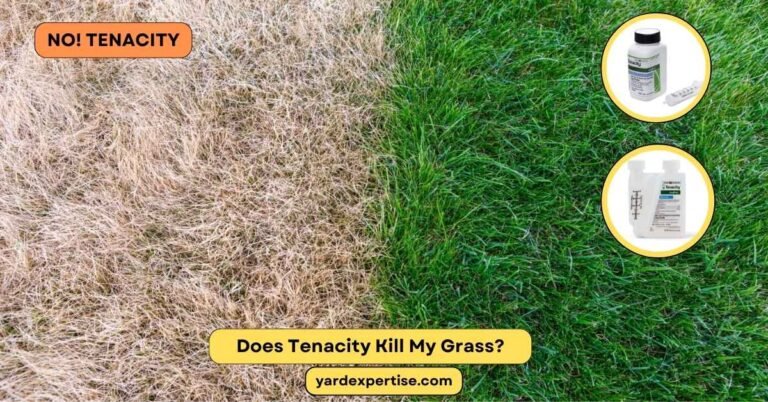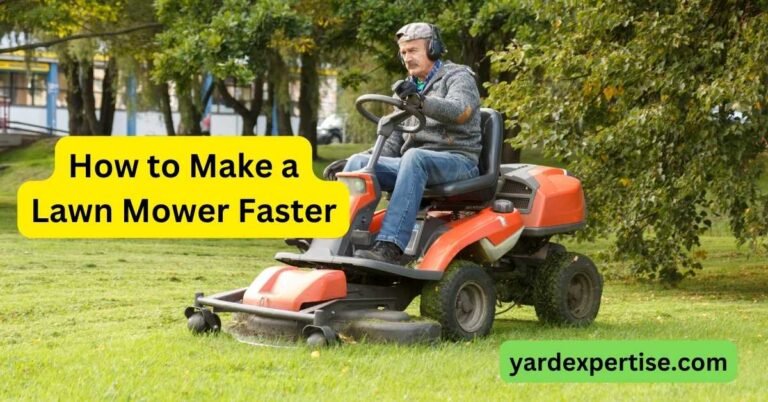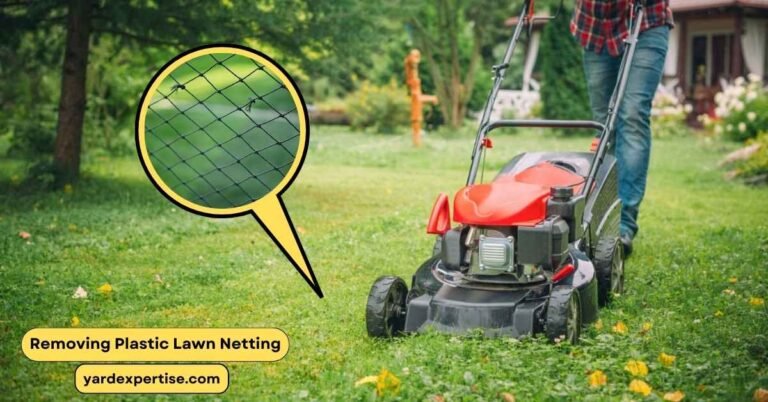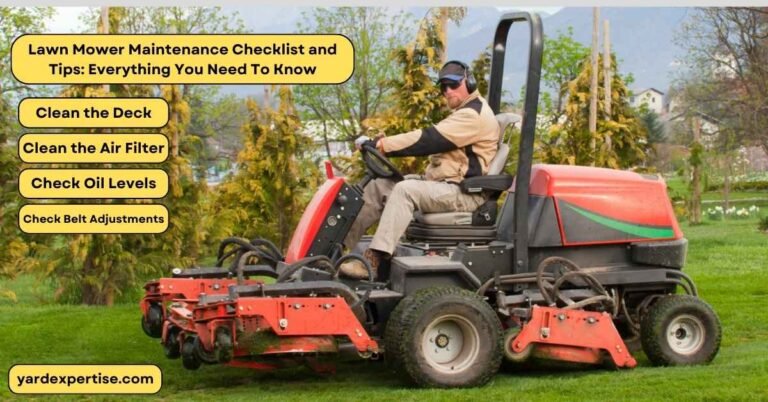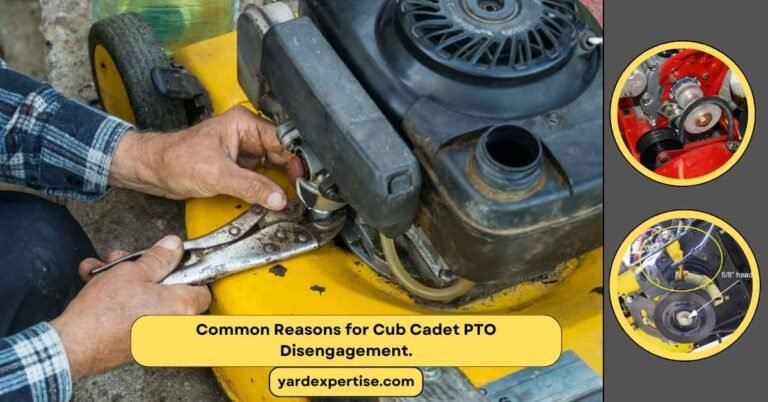How to Fix Lawn With Different Types of Grass?
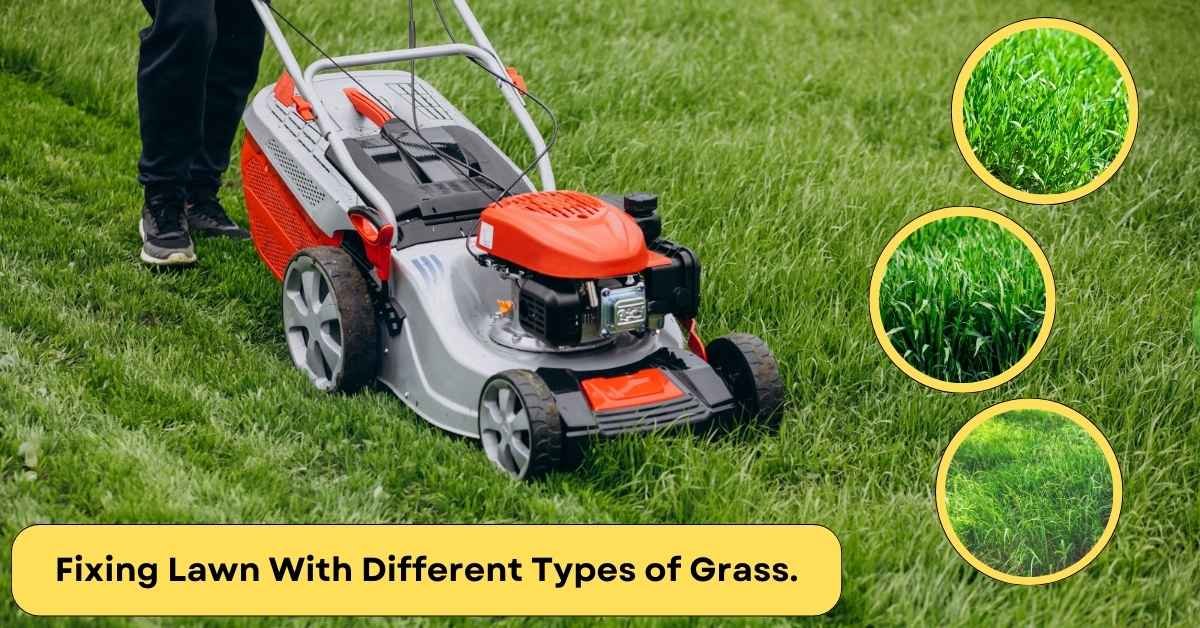
Different types of grass on your lawn can not only ruin your yard’s desired aesthetics but can also harm the grass species you want to grow on your yard as different types of grass compete for resources. This can result in patches of grass of different colors, discoloring, empty patches, and an overall disaster for any gardener or homeowner. But this problem can be solved by identifying the types of grass growing on your lawn that you want to keep or remove, removing the unwanted types of grass, seeding the types of grass that you want, and growing them properly.
Although this is a time-consuming process, it can be easily achieved by following the steps and guidance below, you can create a uniform lawn where only the grass types you desire grow most beautifully.
How to Fix Lawn With Different Types of Grass
The steps that you will need to take to resolve the problem of having different types of grass on your lawn are identifying the grass types, removing the ones that you dislike, fixing the empty areas on the lawn, taking special care of the patches, and monitoring the result to ensure perfection. These steps are thoroughly discussed below.
Identify the Types of Grass
Identifying all the types of grass that are growing on your lawn is the first step towards fixing the lawn with different types of grass. This is not a difficult task with proper guidance but it will take a considerable amount of effort. There are various methods of identifying the different grasses on the lawn.
Identifying Based on Differences
Noticing the differences in appearance is a very useful way to differentiate one grass type from another because each grass type has a unique color, texture, and growth pattern. Grasses can have different shades of green, coarse or smooth texture, and growth patterns. You can differentiate them based on these criteria as each grass type has characteristics unique to them that they do not share with other species.
Noticing Growth and Behavior
You can also differentiate the grass types by carefully monitoring the growth pattern and behavior of the unwanted grass types. Unwanted grass species usually spread a lot quicker than regular planted grass. They spread through rhizomes or stolons, forming thick patches or runners, and invading the entire turf. The behavior of these invasive grasses is generally aggressive and they grow upright. Other grass will not have this type of aggressive spread so they can easily be identified this way.
Differentiating based on Leaf Characteristics
Different grass types have different shapes, sizes, and arrangements that can be a helpful way to distinguish them. Carefully notice the leaves and the blades of the grass and see if they are wide or narrow, serrated or smooth edges, or have any sort of unique leaf arrangements. You can identify the unwanted grass types through this method and work to get rid of them from your lawn.
Identifying the Seed Head and Inflorescence
Another useful criterion that is useful when it comes to differentiating different types of grass is the seed head or inflorescence. The seed heads that sprout from the grass are different in shape, size, and color compared to other grass types which is why the seed head or the inflorescence are a fantastic indicator of the grass type.
Seeking Expert Advice
You can use expert help to identify all the different types of grass on the lawn. Gardening experts or botanists can easily identify all the unwanted grass species that you want to eradicate and plant the grass you desire.
Remove Unwanted Grass
You can start removing the grass after identifying the unwanted grass varieties that have invaded your lawn. There are various methods of removing these unwanted grass species to fix your lawn. They are discussed below.
Hand Pulling Method
Hand hand-pulling method is the easiest and the most accurate method of getting rid of unwanted weeds in the yard but it is also quite labor intensive. Here are steps you can follow to get rid of the weeds on your lawn.
Step 1: Put on gardening gloves to protect your hands from getting dirty.
Step 2: Gather the necessary tools such as a bucket, small soil-tilling equipment, scissors, and so on.
Step 3: Identify the unwanted grass types and remove the grass along with its root system to prevent it from growing again on the lawn. Try to remove as many roots as you can because any remaining root will spread that weed again.
Step 4: Discard all the pulled grass properly or burn them to prevent them from spreading on your lawn again.
Herbicide
Another useful method of removing unwanted grass species from your lawn is using herbicides. Herbicides are chemicals that are designed to get rid of weeds that are plaguing your lawn. The steps for using herbicide for your lawn are given below.
Step 1: Select the herbicide that was specifically designed to get rid of that exact species of unwanted grass variety on your lawn. You will also need to make sure of the fact that the herbicide does not do considerable damage to the other grass that you want to grow
Step 2: Read the instructions on the label of the herbicide and follow accordingly.
Step 3: Use protective clothing, mask, and gloves while mixing and/or spraying the herbicide.
Step 4: Apply the herbicide accordingly to the unwanted grass and ensure that the spread is sufficient to kill the weed.
Step 5: Try to avoid spraying herbicide on the other areas where there are the desired grass species or plants.
Step 6: Mark and monitor the areas where you have applied the herbicide and apply more if necessary.
Overseeding and Reseeding
Overseeding is another great method of fixing patches of unwanted grass species on your lawn. Overseeding is the method through which a particular grass seed is sown in the lawn in overwhelming quantity allowing them to spread all over the patches slowly. The steps of overseeding are given below.
Step 1: Select a high-quality grass seed that is plentiful in your lawn or most recommended for that region and weather.
Step 2: Prepare the soil by raking, tilling, or aerating to create the perfect environment where seeds can properly germinate.
Step 3: Spread the grass seed evenly and follow the recommendation on the labels of the seed.
Step 4: Water the yard in regular intervals and keep the soil moist to help seed germination.
Step 5: Monitor regularly and make sure that the patches of different grass species have become eradicated through this overseeding process.
Reseed the Empty Patches
Unless you use the overseeding method to remove the patches on your lawn, you will need to reseed the empty patches you created by hand-pulling the weed or through herbicide. Select the grass seed that occupies most of the areas of your lawn. Prepare the empty patches by raking the soil and then spread the seed evenly.
Watering
Watering properly is one of the most important lawn care practices that ensures proper growth of the grass in patches you just fixed. Remember to water infrequently and deeply as shallow watering results in improper root growth and encourages weed development.
Use Fertilizer
Apply an adequate amount of fertilizer to the patches to ensure proper growth. Always follow the recommendations on the labels of the fertilizers while applying. Study thoroughly and understand the necessary fertilizers that you need to spread on the patches to ensure proper nourishment of the grass.
Maintenance
Other maintenance activities include regular monitoring, trimming, and adjusting the patch to make sure that the newly planted grass grows healthy and becomes uniform with the rest of the grass on the lawn.
Monitor and Adjust
Regularly monitor the growth of the newly fixed patch of grass and adjust the height accordingly. Trim properly and make sure that the other unwanted weeds do not grow again and create patches of different grass on the lawn.
How to Prevent Different Types of Grass in Lawns?
Although some weeds are hard to stop before they spread and become noticeable on the lawn, they can be reduced by improving lawn density, maintaining soil health, and weed control.
Lawn Density
Maintaining lawn density through overseeding and reseeding with the desired grass is a very effective method of ensuring that weeds stay out and patches of unwanted grass do not form on your lawn.
Soil Health
Ensuring the proper moisture condition and pH condition of the soil goes a long way toward preventing weeds from spreading on the lawn. A well-balanced soil will promote better grass growth and keep the weeds at bay.
Weed Eradication
Weeds are almost impossible to stop from appearing on the lawn but noticing them early and eradicating them by hand-pulling method or herbicide will help to reduce the weeds and prevent different types of grass from spreading on the lawn.
Can Overseeding Change Grass Type?
Overseeding with a different type of grass will change the grass type of your lawn but overseeding with the seeds of grass that already exist in vast numbers on your lawn will result in the same types of grass growing all over the lawn.
Is It Okay to Mix Different Types of Grass Seed?
No, it is not okay to mix different types of grass seed as different types of grass seed require different conditions to grow and they compete for nutrition which results in uneven patches on the lawn of different grass and ruins the overall aesthetics

